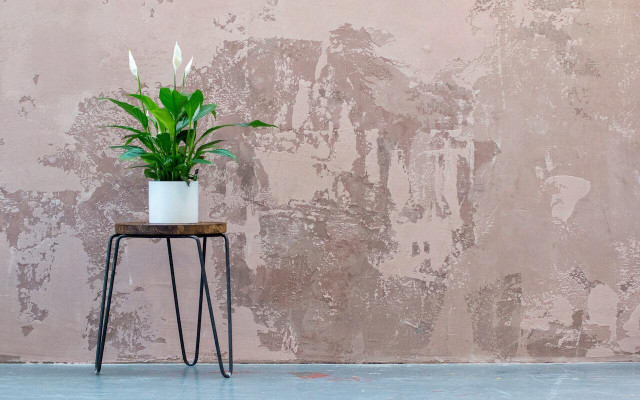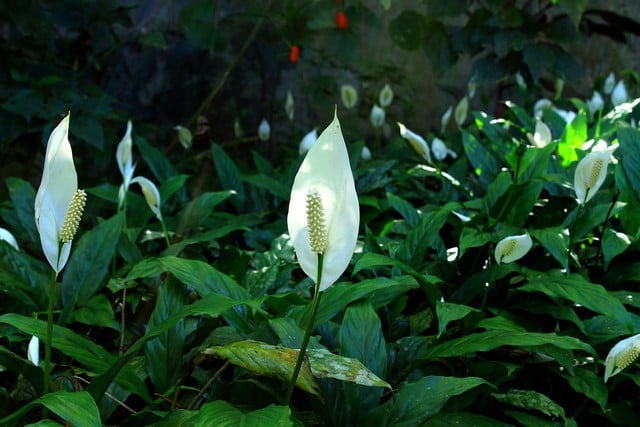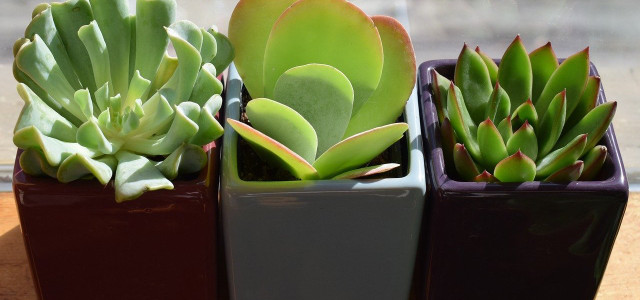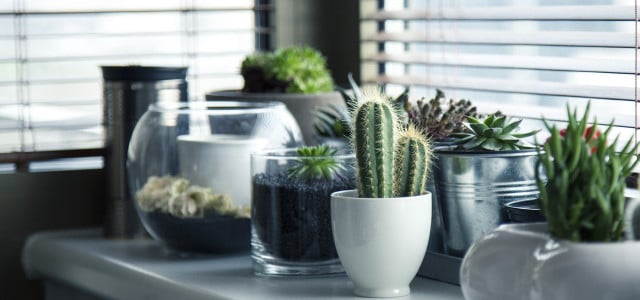Peace lilies can tolerate a lot before they start to show they need some care, but repotting them is necessary. Read on to learn about repotting your peace lily.
Peace lilies make great houseplants, particularly for beginner gardeners, as they can tolerate a lot inside and outside before they start to show that they need to be repotted or cared for. They can grow in low light, when their roots are tangled, and are often gifts for offices or homes due to their air-cleaning abilities. They have white leaves that look like blooms that lighten up the space. Peace lilies may be simple in terms of care needs – but if they show signs of needing to be repotted, there are a few important thing to look out for.
Repotting a Peace Lily: When to Do It



(Foto: CC0 Public Domain / Unsplash / Max Williams)
Peace lilies will signal that they need to be repotted if:
- roots are visible: if you notice the roots showing in the drainage hole or above the pot rim, it means they’re overcrowded. Overcrowded roots will no longer absorb the proper nutrients, oxygen and water that the plant needs. You can also check the roots by carefully sliding the plant out of the pot. If you can see a lot of roots, they are too compact, and the plant slides out easily, it’s time to repot.
- roots are circling the drainage hole: the roots will look for any space they can when in the wrong pot size or having outgrown it. This can lead to them creating a circular shape in the bottom of the pot even if they are not yet coming through the drainage hole. This indicates that the plant needs to be repotted.
- leaves become yellow: if the leaves begin to yellow, this may indicate that the plant needs to be repotted as it is no longer getting the proper nutrients and water all the way to the tips of the plant.
- water drains too quickly: if the water goes instantly out of the drainage hole, this is a sign that the roots are overcrowded and no longer have enough space to grow.
- several years have passed since you last repotted: like other plants, the peace lily will need a new pot even if none of the above signs have occurred. If it has been in the same pot for several years, you need to repot the peace lily with new soil and a larger size pot to hold the roots. Repot your peace lily every 3-4 years.
If the plant isn’t showing severe signs of needing to be repotting and you are able, wait for spring – this is the start of growing season for many plants, which will help it adapt to its new environment.
How to Repot a Peace Lily



(Foto: CC0 / Pixabay / Gadini)
Once you’ve made the decision to repot your peace lily, you can follow these simple steps:
- Water ahead: before you repot your peace lily, give it a bit of water an hour or two before you plan to repot. This will help keep the roots moist before you remove the plant from the pot.
- Prepare the new pot: select a size or two larger than your current pot, and fill the new pot with fresh soil.
- Use the correct soil: peace lilies need the correct soil to thrive. You can make your own soil or use one that is two parts soil, one part coconut fiber, and one perlite in order to give the best aeration for the plant. Fill the pot up to ⅓ full with the soil. Remember to use peat-free soil, as the peating process is bad for the environment.
- Remove the plant: remove the peace lily from its old pot gently. Turn the plant on its side to ease it out of the pot. If the plant does not easily come out, use a knife to gently make a circle around the pot to loosen the dirt.
- Shake off any excess soil: you want to clean as much of the old soil off of the plant as you can, and also give your plant a gentle squeeze to help loose up the crowded roots.
- Place inside the new pot: gently put the peace lily in the new pot in the center of the soil. Add extra soil around the plant up to two inches below the rim. Gently press the plant into the soil to remove air pockets.
- Water: water the plant generously to ensure the plant has adequate water in its new home.
- Find the sunny spot : peace lilies like sunlight, so choose a space for it with lots of indirect light.
- Fertilize: these plants only need to be fertilized once or twice a year. Remember to use homemade fertilizer and plant food for more sustainable practices.
The leaves may turn slightly yellow after repotting, but this is simply a response to the new conditions of the new pot and the plant should bounce back after a month or so in its new home.
Read on:
- 7 Signs Of Overwatering Plants & What to Do
- Growing Sunflowers: When to Plant & How to Care for Them
- How to Propagate Monstera Plants in 5 Simple Steps
Do you like this post?








